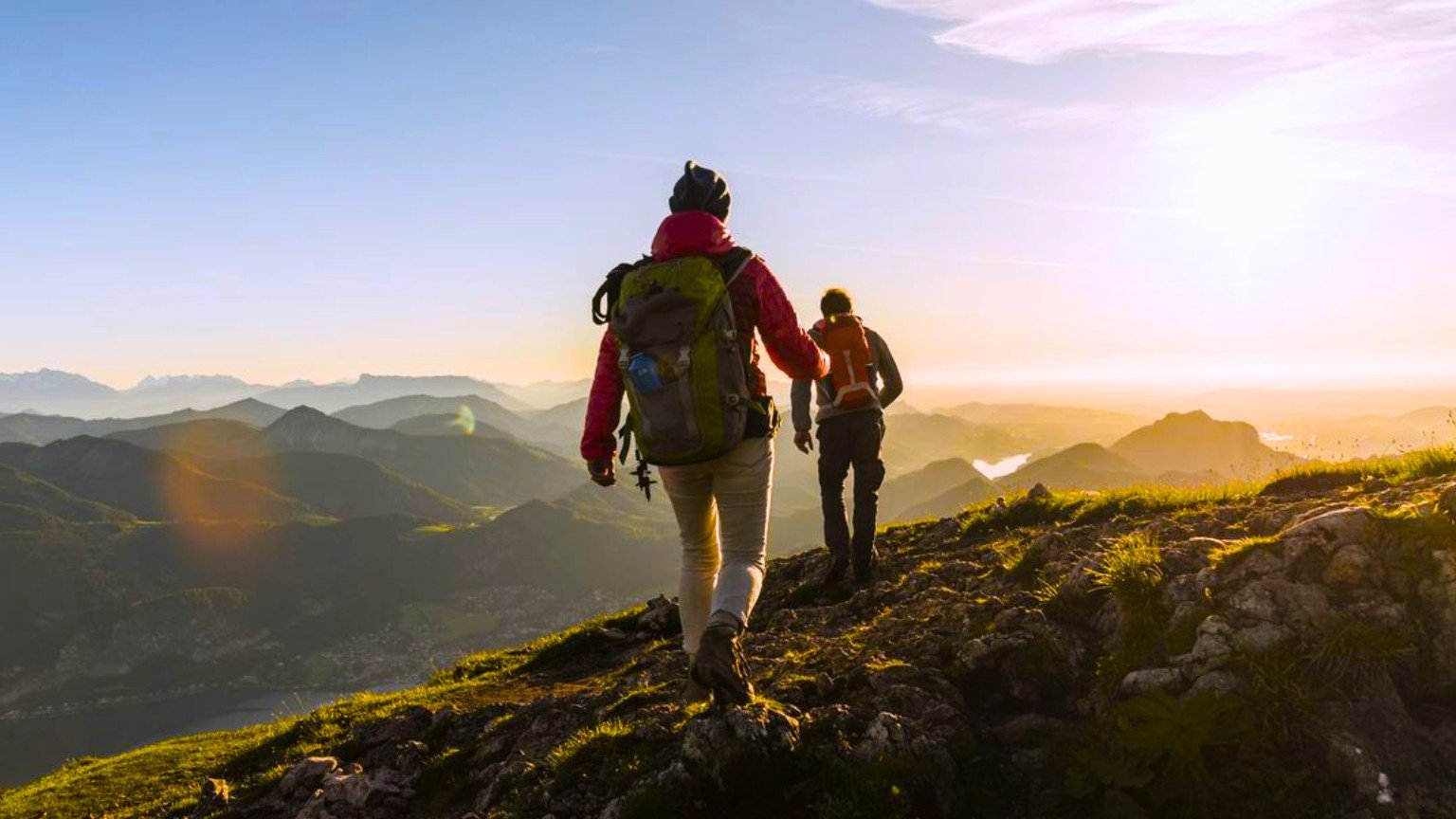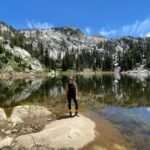Unveiling Nature’s Wonders: Top 5 Short Hikes Under 5 Miles in Glacier National Park
Embarking on a journey through Glacier National Park is like stepping into a pristine wilderness where towering mountains, crystal-clear lakes, and lush alpine meadows paint a masterpiece of nature’s grandeur. For those seeking an immersive experience without the need for lengthy treks, we’ve curated a guide to the “5 Best Hikes in Glacier National Park Under 5 Miles.”
These hikes not only promise awe-inspiring views but also cater to all levels of hikers, making them the perfect choice for a quick escape into the heart of one of America’s most breathtaking national parks.
Join us as we explore these hidden gems, each offering a unique glimpse into the splendor of Glacier National Park’s shorter yet equally enchanting hikes, all within the delightful constraints of a five-mile radius.
Get ready to lace up your boots and immerse yourself in the magic of Glacier National Park’s shorter hikes, discovering why these hikes in Glacier National Park are a must for every nature enthusiast.
People Also Read: Discover 12 Unmissable Places to Stay in Glacier National Park for an Epic Retreat
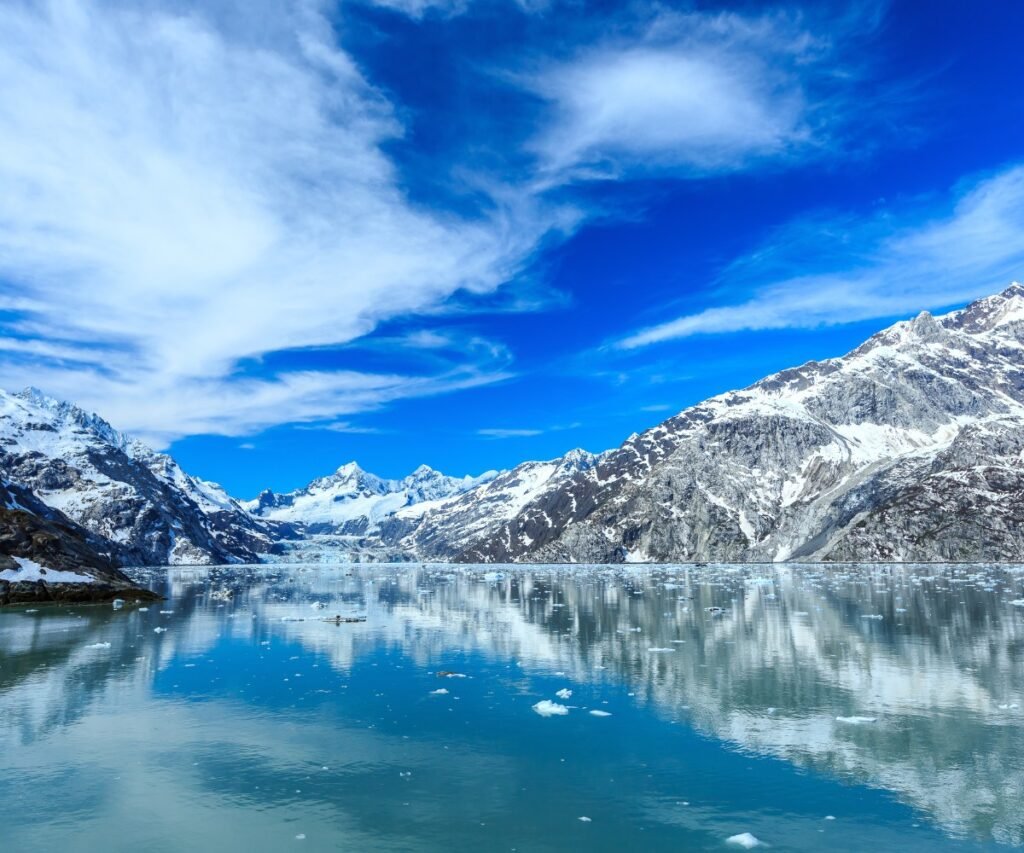
Related: Glacier National Park: 10 Things You Must Know Before You Go
Best Time to Explore The Hikes in Glacier National Park
The best time explore these easy hikes in Glacier National Park largely depends on your preferences and the type of experience you’re seeking. Here are some considerations for different seasons:
Summer (Late June to Early September):
Pros: This is the most popular time for hiking because the weather is generally mild, and most of the park’s trails are open. Wildflowers are in bloom, and the alpine meadows are vibrant.
Cons: Crowds can be significant, especially on popular trails. Accommodations may be booked well in advance.
Fall (Late September to Early October):
Pros: Fall foliage is stunning, and crowds begin to diminish. Wildlife, such as elk and mountain goats, is more active.
Cons: Weather can be unpredictable, with cooler temperatures and the possibility of snow at higher elevations. Some services and accommodations may start to close for the season.
Spring (Late May to Early June):
Pros: Spring brings a burst of new life, with blooming wildflowers and rushing waterfalls. Wildlife is active, and the park is less crowded compared to summer.
Cons: Some trails and roads may still be closed due to snow, and weather conditions can be variable.
Winter (Late November to Early April):
Pros: Winter provides a serene and peaceful atmosphere. Cross-country skiing and snowshoeing opportunities are abundant. The landscape is transformed into a winter wonderland.
Cons: Many roads and facilities are closed during winter. Weather can be severe, with cold temperatures and heavy snowfall. Specialized gear and precautions are necessary.
Before planning your hike, check the current trail and road conditions on the official Glacier National Park website. Additionally, be aware of wildlife safety measures, as encounters with bears are possible in the park. Always carry bear spray, hike in groups, and make noise to alert wildlife to your presence.
Ultimately, the best time to hike in Glacier National Park depends on your interests and tolerance for different weather conditions. Each season offers a unique perspective on the park’s breathtaking landscapes.
People Also Read: Discover the 22 Most Beautiful & Best Hikes in the US (Intermediate to Short)
Essential Hiking Gear for Glacier National Park
To ensure your hiking experience in Glacier National Park is safe and comfortable, you’ll need to bring some essential gear with you on your hikes in Glacier National Park. Here are some of the items you should bring with you:
- Appropriate Footwear: Wear sturdy and comfortable hiking boots or shoes with good traction.
- Weather-Appropriate Clothing: Pack layers to adjust to changing weather, including a waterproof jacket, hat, and gloves.
- Navigation Tools: Bring a detailed map, a compass, or a GPS device to navigate the trails.
- Sun Protection: Remember to bring sunscreen, sunglasses, and a wide-brimmed hat to protect yourself from the sun.
- Hydration System: Carry a reusable water bottle or a hydration pack to stay well-hydrated during your hikes.
- Snacks: Pack energy-boosting snacks like trail mix, granola bars, and fruits to keep you fueled.
- First Aid Kit: Include bandages, pain relievers, blister treatment, and any necessary personal medications.
- Bear Spray: In bear country, carry bear spray and know how to use it for added safety.
- Backpack: Use a comfortable backpack to carry your essentials and distribute weight evenly.
- Emergency Essentials: Bring a flashlight, a whistle, and a fully charged cell phone for emergencies.
Here is the List of Hikes in Glacier National Park
Now that you know what to bring and when to go, let’s get to the fun part: the hikes! Here are five of the best hikes in Glacier National Park that are under 5 miles long but still offer amazing views and experiences. You’ll find something for everyone, from easy and family-friendly trails to challenging and rewarding ones. Let’s get started!
1. Trail of the Cedars

The Trail of the Cedars is one of the easiest and most popular hikes in Glacier National Park. It’s a 0.9-mile loop trail that anyone can use, including those in wheelchairs, and it’s good for all ages.
The trail guides you through a lush forest full of ancient western red cedars and western hemlocks. Some trees are more than 500 years old! Along the way, you’ll come across a beautiful waterfall and a pretty bridge over Avalanche Creek.
Since the trail is in the shade, it stays cool, making it great for a hike on a hot summer day. The journey to Avalanche Lake spans 4.6 miles, commencing alongside Avalanche Creek and weaving through dense cedar and pine woods. The trail gently undulates, presenting picturesque landscapes at every twist and turn, creating a beautiful experience throughout the hike to the lake.
2. St. Mary Falls Trail

The St. Mary Falls Trail is a popular and easy hike, Covering a 1.7-mile round trip, this trail unveils two mesmerizing waterfalls: St. Mary Falls and Virginia Falls. Starting at the St. Mary Falls Trailhead along the Going-to-the-Sun Road, the path winds through a forest of pine and spruce trees, crossing a bridge over St. Mary River. The first stop is St. Mary Falls, a 35-foot drop of turquoise water into a deep pool.
For more adventure, continue 0.8 miles to Virginia Falls, a 50-foot drop of white water into a rocky basin. Exercise caution on the wet rocks. Concluding at Virginia Falls, you can either turn back or explore additional trails like Baring Falls Trail or Sun Point Nature Trail—perfect for those seeking diverse hikes in Glacier National Park.
People Also Read: Discover 7 Stunning Stays in Glacier National Park for an Epic Retreat
3. Red Rock Falls Trail
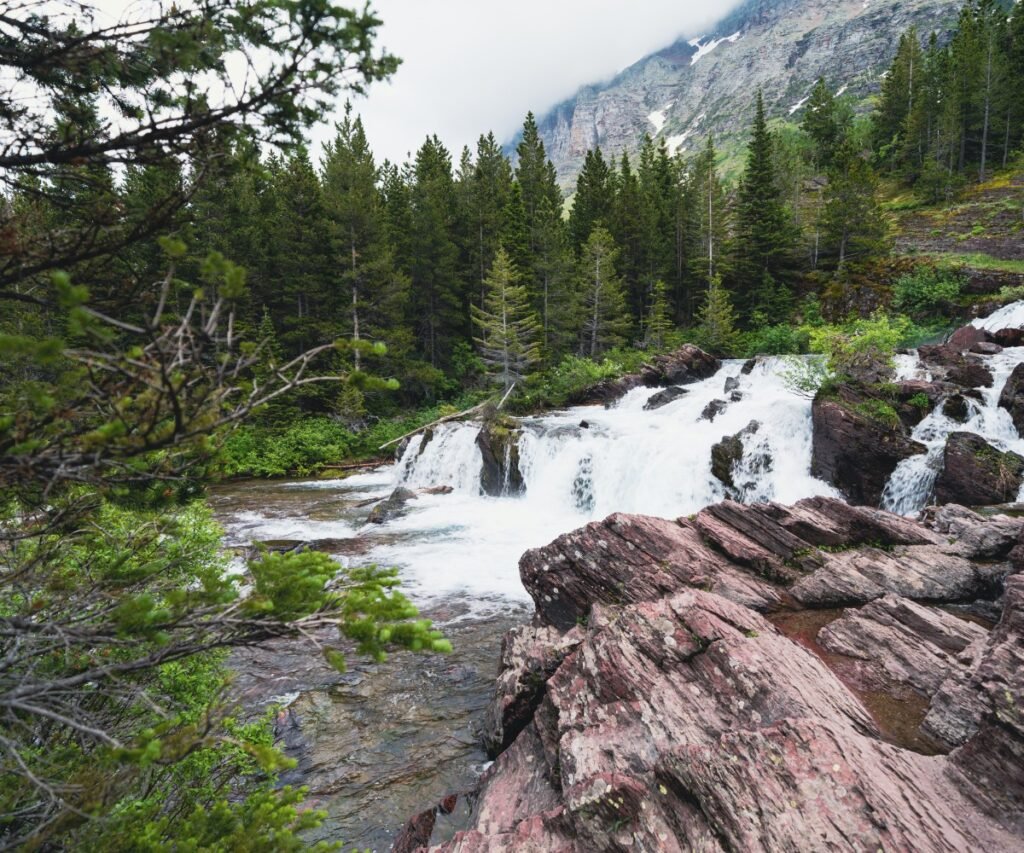
The Redrock Falls Trail is a 3.6-mile round trip, perfect for those seeking easy hikes in Glacier National Park. Starting at the Swiftcurrent Pass Trailhead near Many Glacier Hotel, the trail follows Swiftcurrent Creek, offering diverse scenery of meadows, forests, and wetlands.
Keep an eye out for wildlife like moose, deer, elk, and bears, along with vibrant wildflowers. The mostly flat trail has minor elevation gain.
First stop is Fishercap Lake, a serene spot reflecting the mountains. Look for trout, beavers, ducks, or geese. Continue 0.7 miles to Red Rock Falls, a picturesque series of cascades and pools flowing over red and green rocks. Though not very high, the falls are colorful and inviting. Explore and enjoy the sights and sounds of the water.
4. Grinnell Glacier Trail
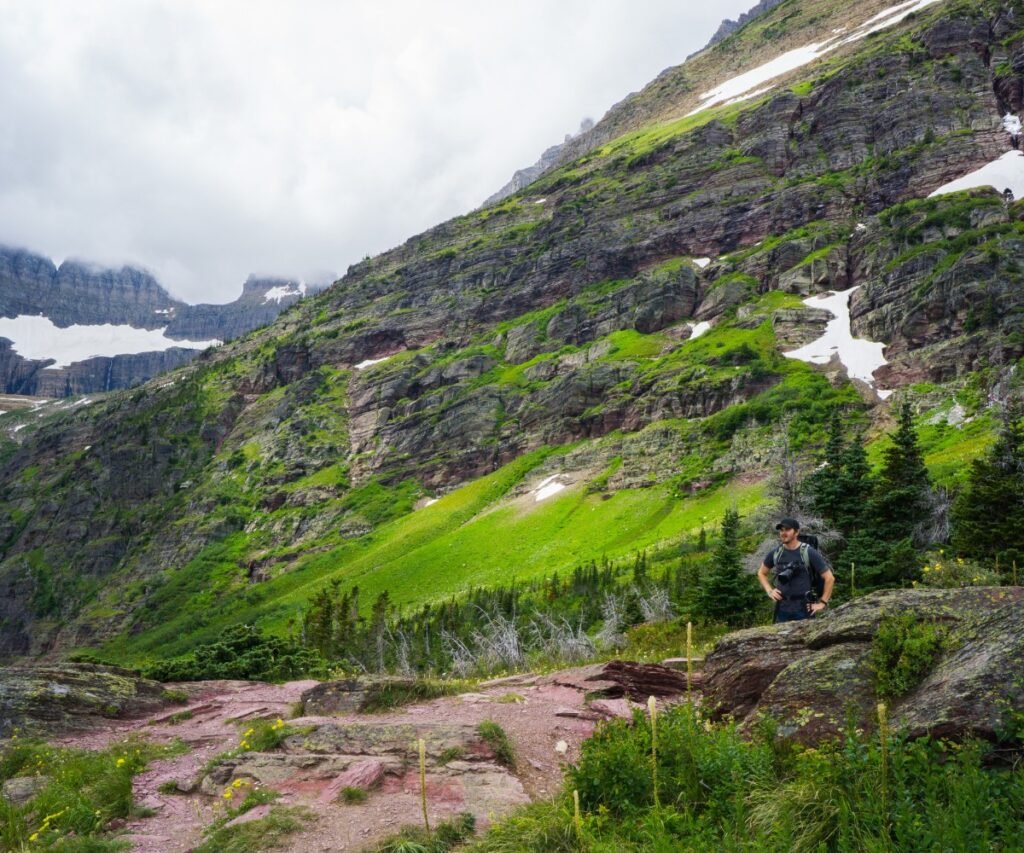
The Grinnell Glacier Trail, a challenging yet rewarding 7.6-mile round trip, leads to one of Glacier National Park’s largest glaciers. Starting at Grinnell Glacier Trailhead near Many Glacier Hotel, you can shorten the hike to 5.3 miles with a boat shuttle across Swiftcurrent Lake and Lake Josephine.
The trail ascends through aspen and fir-filled forests, offering stunning views of lakes, mountains, and waterfalls like Angel Wing Falls and Grinnell Falls.
Keep an eye out for bighorn sheep, mountain goats, and pikas. Exercise caution on the steep, rocky, and possibly slippery or snowy trail. The journey concludes at Grinnell Glacier Overlook, providing a spectacular view of the glacier, glacial lake, and the massive 152-acre ice sheet with turquoise water and icebergs.
Marvel at the Garden Wall, a rock ridge separating the park’s east and west sides. Determine whether to retrace your steps or venture onto other trails like the Highline Trail or Granite Park Trail—a perfect option for those looking to explore a variety of hikes in Glacier National Park.
People Also Read: Prepare for Glacier National Park with These Must-Know Tips
5. Highline Trail
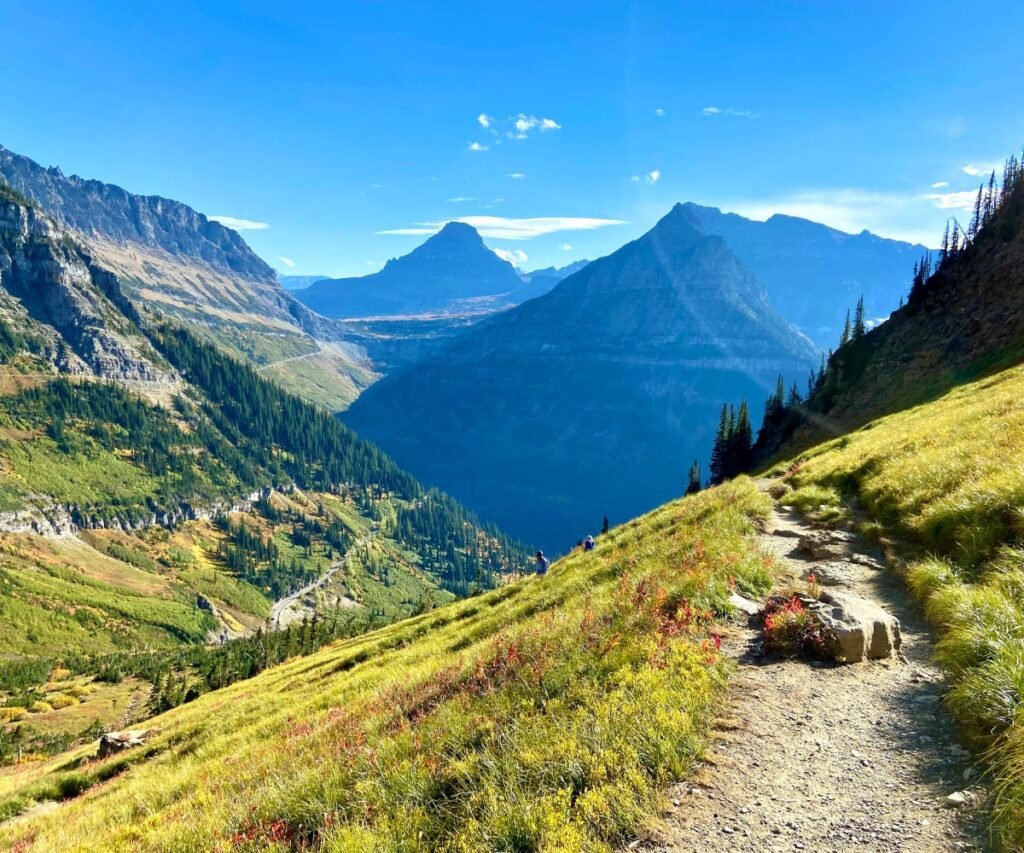
Passing through meadows, forests, and alpine tundra, the trail showcases diverse flora and fauna. Wildflowers like lupine and wildlife such as marmots and bears add to the experience. Enjoy stunning views of mountains, glaciers, and valleys, concluding at Granite Park Chalet, a historic lodge offering food, water, and lodging.
Overnight stays are an option, or you can shuttle back to the Loop. Extend your adventure with the 4-mile downhill Loop Trail, connecting to a shuttle at the Loop for a return to Logan Pass
Best Things To Do In Glacier + Travel Tips in Glacier National Park, Montana
FAQ’s
What are the best hikes for beginners in Glacier National Park?
Trail of the Cedars, Hidden Lake Overlook, and Avalanche Lake Trail are ideal for beginners in Glacier National Park. These trails offer easy terrains and scenic views, suitable for those new to hiking.
Are there any guided hiking tours available in the park?
Guided hiking tours in Glacier National Park cater to various skill levels, providing expert insights into the park’s ecology and trails.
What is the best time of year to hike in Glacier National Park?
The best time to hike in Glacier National Park is from late June to early September, offering favorable weather and full trail accessibility.
What safety precautions should I take while hiking in Bear Country?
In bear country, carry bear spray, make noise to avoid surprises, hike in groups, and avoid dawn and dusk to ensure safety.
Are there family-friendly hiking trails in the park?
Family-friendly trails in Glacier National Park include Trail of the Cedars and St. Mary Falls Trail, offering safe and scenic hiking experiences for all ages.
Can I do fishing while on a hiking trip in Glacier National Park?
Fishing during a hike in Glacier National Park is allowed, following area-specific regulations to ensure a sustainable and enjoyable experience.
Which trail offers the best views of glaciers in the park?
The Grinnell Glacier Trail offers stunning glacier views, making it a top choice for experiencing the park’s glacial beauty.

